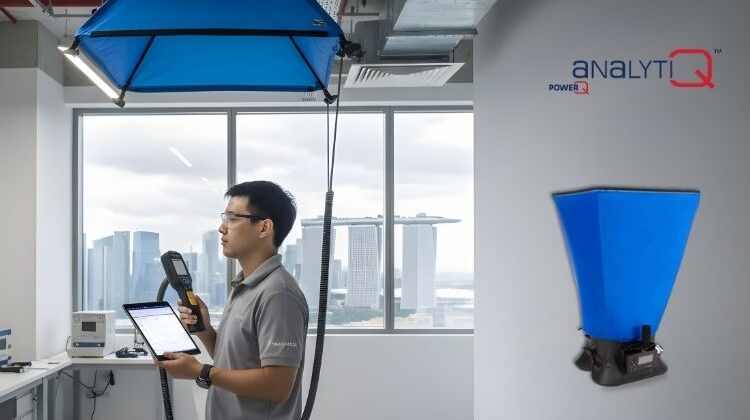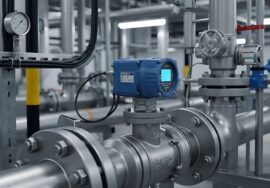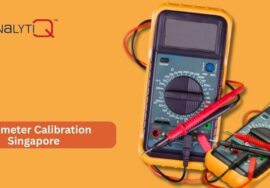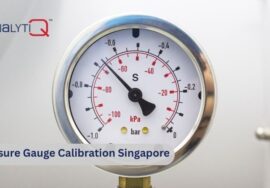
Balometer Calibration Singapore: Ensuring Accurate Airflow for Every Environment
In contemporary facilities, air distribution has a significant impact on energy efficiency, as well as comfort and safety. Engineers utilize tools such as balometer calibration, also referred to as airflow capture hoods, to ensure a favorable indoor environment. These instruments determine the quantity of air diffused and circulated through the air, which is used to match HVAC systems.
But over time, wear, and environmental conditions, the readings may be erroneous, causing unbalanced ventilation and poor results. It is there that balometer calibration Singapore is necessary. Calibration on a routine basis is to make sure that all airflow measurements are accurate, traceable, and are within industry standards.
Why do we need Balometer Calibration?
A balometer is a number that measures airflow either in cubic meters per hour or cubic feet per minute. It is a vital instrument to check the performance of the HVAC systems, cleanroom ventilation, and indoor air quality (IAQ) compliance.
However, just as any other measuring device, balometers become inaccurate because of sensor deterioration, dust deposition, or mechanical erosion. The only way of restoring confidence in the readings is by calibration.
The calibration of the balometer is done against a standard of a known airflow in a controlled environment. Both deviations are corrected, and measurements fulfil ISO/IEC 17025 traceable requirements. This procedure ensures that all the readings are accurate for airflow performance.
The Science of the Balometer Calibration
Balometer calibration is not only an inspection; it is a scientific process. Technicians model in a laboratory with certified equipment various conditions of airflow. A comparison of the balometer readings between various flow rates is done to measure linearity, sensitivity as well and accuracy.
All the results are recorded, and corrections are made to counteract the drift of the measurement. This is then followed by a calibration certificate, which states that there is traceability to international standards and that the uncertainty information is given in detail as well.
This careful procedure is done to make sure that your instrument is of the quality required to perform the functions of HVAC validation, building commissioning, and environmental monitoring.
Balometer Calibration Role in Singapore Climate and Infrastructure
Singapore has a humid tropical climate that requires specific attention to ventilation and air conditioning. The airflow control in buildings, high-rise hospitals, data centers, and laboratories directly affects the energy consumption, comfort, and indoor air quality.
Periodic balometer calibration Singapore assists the facility managers and engineers to ensure maximum performance of the system and to adhere to high national and international standards, including:
- NEA Indoor Air Quality Guidelines.
- Code of Practice for Air-Conditioning and Mechanical Ventilation SS 554:2016.
- Calibration traceability of IS/IEC 17025.
Even briefly, calibration makes sure that all cubic meters of air flow in any direction as intended- in the best interest of comfort, safety, and sustainability.
Frequencies of Calibration of a Balometer?
The rate of calibration is influenced by the frequency and location of the use of the balometer. Here’s a general guide:
- Annual: Typical suggestion of the majority of commercial or industrial industries.
- Every half-year: In case of cleanrooms, pharmaceutical or controlled environments.
- Follow-up: In case of incidents, in case the instrument is dropped, damaged, or used in harsh conditions.
Regular balometer testing in Singapore ensures accuracy and eliminates the expensive HVAC inefficiencies and compliance concerns.
Professional Calibration Step-by-Step Process
The calibration procedure of PowerQanalytiQ is based on internationally accepted procedures that are aimed at accuracy and traceability.
1. Pre-Inspection: The balometer is inspected visually in case of damage, debris, and wearout of the sensor.
2. Configuration: The device is mounted in an airflow test chamber or wind tunnel.
3. Measurement Comparison: Readings are checked with certified reference standards of airflow at various flow rates.
4. Adjustment & Verification: The deviations are corrected, and rechecks of the readings are done to ensure linear accuracy.
5. Certification Certificate of traceability: A traceable certificate of calibration containing the uncertainty, the test conditions, and equipment references.
All of these steps are done to ensure that the balometer provides accurate airflow measurements to be used in the verification of the performance in the actual HVAC systems.
The major advantages of Balometer Calibration
Regular calibration has several benefits for the facilities and engineers:
- Correct Airflow Measurement: Make sure that what you are reading is accurate in terms of system performance.
- Power Saving: Assists in balancing the air and saving on unnecessary conditioning and loss of power.
- Regulatory Compliance: ISO, SS 554, and NEA IAQ guideline compliant.
- Lifespan of Equipment: Eliminates overworking or ventilation parts.
- Better Indoor Air Quality: Makes the rooms have the same amount of airflow so that the air can be clean and healthy.
With regular balometer calibration in Singapore, you can be able to ensure that your HVAC systems are efficient and that they achieve environmental and operational objectives.
Dependent Industries on Balometer Calibration
The role of balometer calibration is very critical in various sectors in Singapore, such as:
- HVAC and Building Commissioning: To check the balance of the air and the energy efficiency.
- Cleanrooms and Pharmaceuticals: To clean rooms with a high purity of the air.
- Hospitals and Laboratories: To secure sterile and critical places.
- Making industrial Facilities: To monitor the ventilation and exhaust systems.
- Data Centers: To ensure that data centers have adequate air flow to avoid any overheating.
All of these industries use an accurate airflow check to achieve safety, performance, and compliance levels.
Typical Calibration Problems and the solution to them with PowerQanalytiQ
Calibration of the balometer is to be done about the environmental variables and the state of the equipment. Common challenges include:
- The changes in temperature and pressure of air density.
- Long-term drift of sensors.
- Fieldwork contamination or mismanagement.
Calibration is done at PowerQanalytiQ under laboratory-controlled conditions at advanced airflow test benches. All the processes are undertaken by trained technicians in accordance with ISO/IEC 17025 standards that provide consistency and reliability in all reports.
Why Balometer Calibration with PowerQanalytiQ in Singapore?
A well-established company that has gained the confidence of its clients in the provision of professional calibration services in the field of HVAC and airflow instruments is PowerQanalytiQ. This is what will make our service different:
- Servers under ISO/IEC 17025.
- Calibration facilities of the newest standards with high precision airflow testing.
- Skilled engineers are educated in the field of HVAC calibration and air measurement science.
- Detailed record keeping of the results of the pre-test and post-test.
- Short turnaround time with on-site or laboratory flexible calibration.
You will have a trusted partner to depend on since by selecting PowerQanalytiQ, your balometer calibration Singapore will be in compliance both technically and regulatorily.
Frequently Asked Questions
Q1. Measurement of the balometer calibration time?
Ans: Generally, 3-5 business days, depending on the model and testing specifications.
Q2. Does PowerQanalytiQ have on-site calibration?
Ans: Yes. We provide on-site calibration and in-lab calibration as a flexibility measure that requires a minimum of downtime.
Q3. What is in a calibration certificate?.
Ans: It contains measured data, uncertainty, test conditions, and reference traceability.
Q4. What is the frequency of doing calibration?
Ans: On an annual basis, on normal use; on a semi-annual basis in regulated or high precision environments.
Q5. Do you accept any balometer brands?
Ans: Yes, we are the service provider of top brands like TSI, Kanomax, and Shortridge.
Conclusion
The foundation of comfort, safety, as well as energy efficiency is airflow precision. By using professional balometer calibration Singapore, you are assured that all the measurements of airflow are precise and traceable, and in accordance with the ISO requirements.
In PowerQanalytiQ, our technical expertise and high-end calibration systems are some of the solutions we use to offer reliability to each client. You may have a cleanroom, data center, or a building facility, but regardless of the facility type, our calibration services will make sure your equipment works with perfection.
Today, you may contact PowerQanalytiQ to have your balometer calibration booked in Singapore and have reliable and certified airflow measurements in your systems.




